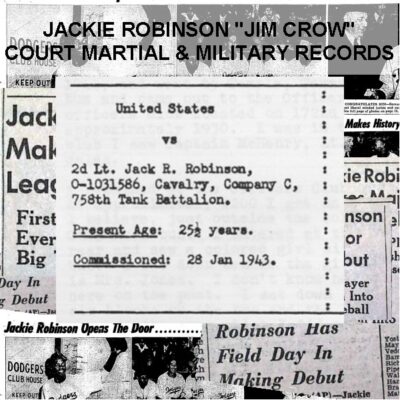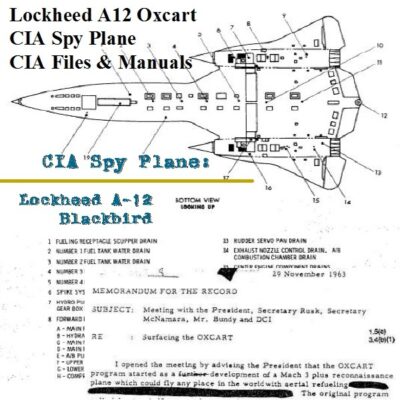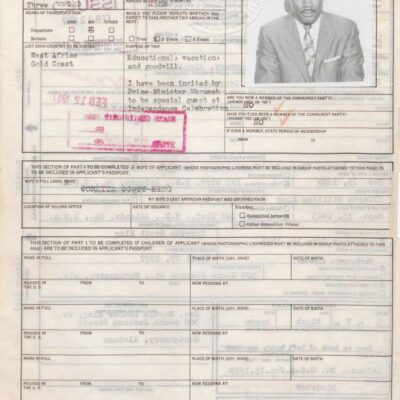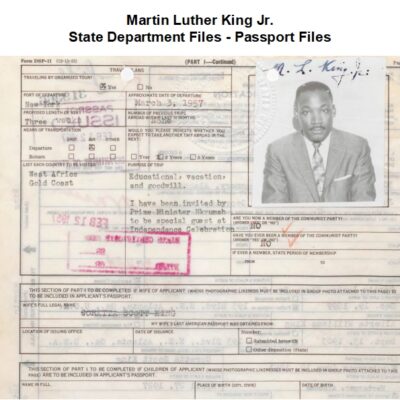
Description
Woodward, Casey, and the CIA’s Secret Wars
Timeline of Events
- 1971: Bob Woodward leaves the military and turns down Harvard Law School, instead taking a job at the Washington Post.
- Early 1970s (Watergate Era): Bob Woodward, along with Carl Bernstein at the Washington Post, investigates the Watergate scandal. During this time, CIA memo indicates that columnist Jack Anderson was informing to the CIA on Woodward. FBI files focus on whether FBI Agent Angelo J. Lano was a source for Woodward, Bernstein, and the Washington Post during the Watergate investigation, and if the Post had a source within the FBI.
- 1973: The Washington Post wins the Pulitzer Prize for its work on the Watergate scandal by Bob Woodward and Carl Bernstein.
- January 28, 1981: William J. Casey becomes the Director of Central Intelligence (DCI).
- 1984 – 1986: CIA logs document the time and dates of phone calls and meetings between Bob Woodward and DCI William J. Casey.
- 1987:Bob Woodward publishes his book, “Veil: The Secret Wars of the CIA,” which details the CIA’s “secret wars” during William J. Casey’s leadership. The book includes a controversial account of a deathbed interview with Casey in January 1987.
- January 1987: According to Woodward’s account in “Veil,” he interviews a hospitalized and allegedly incapacitated William J. Casey. In the interview, Casey reportedly nodded yes when asked if he knew about the diversion of funds to the Nicaraguan Contras and twice said “I believed” when asked “why?”.
- January 1987: President Reagan and other officials publicly state that Woodward could not have interviewed Casey in his hospital room because Casey was unable to speak.
- January 1987 (around the same time): Robert M. Gates, Casey’s deputy, recounts speaking with Casey during this period in his book “From the Shadows,” seemingly contradicting claims that Casey was entirely unable to communicate.
- January 29, 1987: William J. Casey’s tenure as DCI ends.
- May 6, 1987: William J. Casey dies.
- Post-1987:CIA files show Agency officials blamed Woodward for the death of CIA Beirut bureau chief William Buckley due to a Washington Post article reporting CIA responsibility for a bombing in Beirut.
- A memo from the CIA Acting Director of Personnel warns the Deputy Director for Administration that Woodward has filed Freedom of Information Act requests regarding the Agency’s Voluntary Investment Plan.
- Internal CIA reviews of Woodward’s book “Veil” criticize it for revealing classified information, its chronological structure, its reliance on faith from the reader, and for Woodward failing to transition from investigative reporter to author.
- 2003: Ronald Kessler publishes his book, “The CIA at War,” which mentions that a CIA internal report found Casey had “forty-three meetings or phone calls with Woodward, including a number of meetings at Casey’s home with no one else present” during the research for “Veil.”
Cast of Characters
- Bob Woodward: An American investigative journalist. After leaving the military in 1971, he joined the Washington Post. He gained prominence for his work with Carl Bernstein on the Watergate scandal, which won the Washington Post a Pulitzer Prize in 1973. Later in his career, he authored “Veil: The Secret Wars of the CIA” (1987), which sparked controversy due to its account of a deathbed interview with CIA Director William Casey.
- William J. Casey: Served as the Director of Central Intelligence (DCI) from January 28, 1981, to January 29, 1987. He died on May 6, 1987. His leadership of the CIA during the 1980s was the subject of Bob Woodward’s book “Veil,” which included a disputed account of a final interview with Casey.
- Carl Bernstein: An American investigative journalist who worked with Bob Woodward at the Washington Post. Together, they were the primary reporters on the Watergate scandal, which earned the newspaper a Pulitzer Prize in 1973.
- Angelo J. Lano: An FBI Agent who headed the investigation of the Watergate break-in. FBI files related to Bob Woodward focus on whether Lano was a source of information for Woodward, Bernstein, and the Washington Post during the investigation.
- Jack Anderson: A syndicated American columnist. A CIA memo mentioned that Anderson was informing the CIA about Bob Woodward during the Watergate era.
- Ronald Reagan: The President of the United States during William J. Casey’s tenure as DCI and the publication of Bob Woodward’s “Veil.” He publicly stated that it was impossible for Woodward to have interviewed Casey in his hospital room due to Casey’s alleged inability to speak.
- Robert M. Gates: Served as William J. Casey’s Deputy Director at the CIA. In his book “From the Shadows,” he recounts speaking with Casey during the same period in January 1987 when Woodward claimed to have interviewed him, seemingly contradicting claims that Casey was completely incapacitated.
- Ronald Kessler: An American journalist and author who wrote the book “The CIA at War” (2003). His book cited a CIA internal report that detailed numerous meetings and phone calls between Casey and Woodward during the research for “Veil.”
- William Buckley: The CIA Beirut bureau chief. CIA officials reportedly blamed Bob Woodward for Buckley’s death due to a Washington Post article that allegedly revealed the CIA’s involvement in a Beirut bombing.
Bob Woodward CIA and FBI Files
627 pages of CIA and FBI files related to Bob Woodward.
After leaving the military in 1971, Bob Woodward turned down going to Harvard Law School, instead taking a job at the Washington Post.
He has won nearly every American journalism award, and the Washington Post won the 1973 Pulitzer Prize for his work with Carl Bernstein on the Watergate scandal.
Woodward was accused of fabricating a deathbed interview with CIA Director William Casey, as described in his book, “Veil: The Secret Wars of the CIA,” (1987), about the CIA’s “secret wars” during William J. Casey’s leadership of the Agency. Some critics say the hospital bed interview of Casey featured in the book could not have taken place as written. According to Woodward, when Casey was asked if he knew about the diversion of funds to the Nicaraguan Contras, “His head jerked up hard. He stared, and finally nodded yes.” Woodward wrote that when he asked him “why?,” Casey responded saying twice, “I believed,” then fell asleep.
A number of officials, including President Reagan, publicly said that it was impossible that Woodward had interviewed Casey in his hospital room in January 1987, because they alleged Casey could not speak. This was disputed by others who talked with Casey at the time. For example, Robert M. Gates, Casey’s deputy at the time, in his book “From the Shadows”, recounts speaking with Casey during this exact period. Ronald Kessler wrote in his 2003 book, “The CIA at War,” that the CIA’s internal report found that Casey “had forty-three meetings or phone calls with Woodward, including a number of meetings at Casey’s home with no one else present” during the period Woodward was researching his book.
CIA FILES
570 pages of CIA files related to Bob Woodward, mostly covering issues from the 1980’s. CIA memorandum cover Agency reaction to books and articles written by Woodward.
Highlights include:
A memo indicating that columnist Jack Anderson was informing to the CIA on Woodward during the Watergate era. CIA logging of the time and dates of phone calls and meetings between Woodward and Director of Central Intelligence William J. Casey, from 1984 through 1986. Casey was DCI from January 28, 1981 to January 29, 1987 and he died on May 6, 1987.
Files show CIA officials blamed Woodward for the death of CIA Beirut bureau chief William Buckley, because of an article appearing in the Washington Post that reported that the CIA was responsible for a bombing in a Beirut suburb. A memo from the CIA Acting Director of Personnel to the Deputy Director for Administration, warns that Woodward has filed Freedom of Information Act requests regarding the Agency’s Voluntary Investment Plan.
Much attention is given to how much secret information was in Woodward’s book “Veil.” A review of the book in an internal CIA journal says, “This is a bad book not just because Woodward arrogates to himself the right to decide what is classified and what is not. Nor is it bad just because of its relentlessly chronological line of march, plowing insistently through all possible connections of logic or subject matter; or just because it demands that you take so much on faith (although we’re getting closer to the truth now). No, Veil is bad because Woodward fails to turn himself from an investigative reporter into an author.”
FBI FILES
57 pages of FBI files related to Bob Woodward chiefly dealing with Watergate.
Much of the focus of these files concern if FBI Agent Angelo J. Lano, who was heading the investigation of the Watergate break in, was a source of information for Bob Woodward, Carl Bernstein and the Washington Post during the investigation. The files further address if the Post had a source in the FBI.




Related products
-

Accidents and Lost Nuclear Weapons Department of Defense Files
$19.50 Add to Cart -

Jackie Robinson “Jim Crow” Court Martial & Military Personnel Records
$19.50 Add to Cart -


A12 CIA Spy Plane: Lockheed Blackbird Project Oxcart Files
$19.50 Add to Cart -


Martin Luther King Jr. State Department Records – Passport Files
$3.94 Add to Cart